With their brown skin and sweet green flesh, kiwis are a delicious fruit that you can eat on their own or add to a fruit salad or smoothie for breakfast. You can find them easily at the greengrocer or supermarket, but before buying them you should try to find out if they are fresh or if they have been picked for a while. To recognize a fruit that has gone bad, you must first examine it for any traces of mold. You can also smell and touch it to see if it's good. Once at home, store the kiwifruit properly to prevent them from spoiling before you have time to eat them.
Steps
Method 1 of 3: Examine the Kiwis

Step 1. Check the skin and pulp for any traces of mold
Take the fruit in your hand and look closely to see if there are any moldy parts. Mold generally occurs in the form of white or greyish, sometimes hairy, efflorescences.
The mold could be spread all over the fruit or localized in a single area. Given the small size of kiwifruit, it is better to throw away the moldy ones rather than trying to save the parts that have not yet been attacked by the mold

Step 2. Determine if the kiwifruit has dry skin or flesh
Examine the fruit to see if the peel appears shriveled and faded. The pulp may also be dull in color and appear dry and not very juicy. These signs could indicate that the kiwi in question has gone bad.

Step 3. Examine the fruit to see if there are any saggy areas
Simply by observing them it is possible to notice if there are any soft and moist parts, especially on the outside. This is also a clue that could indicate that the kiwi has gone bad.
Method 2 of 3: Smell and Touch the Kiwis
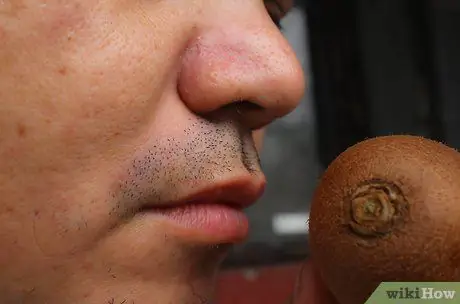
Step 1. Smell them to see if they have a sour smell
A spoiled kiwi has a strange, slightly sour smell. Bring your nose to the peel and pulp to determine if they smell good or if, on the contrary, they smell bad. If a fruit smells bad, it means it has gone bad.
A good-to-eat kiwi has a light citrus scent with a sweet note
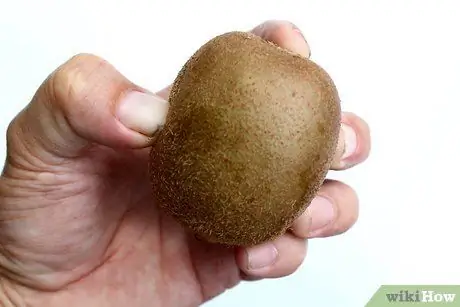
Step 2. Gently crush the kiwifruit to evaluate its consistency
Press them gently between your fingers. Very hard fruit is likely to be unripe and take some time to ripen, however there is also the possibility that it has gone bad. On the other hand, mushy kiwis are definitely to be thrown away.
You can try to ripen very hard fruits by keeping them for a few days in the fruit bowl next to an apple or banana to see if they soften
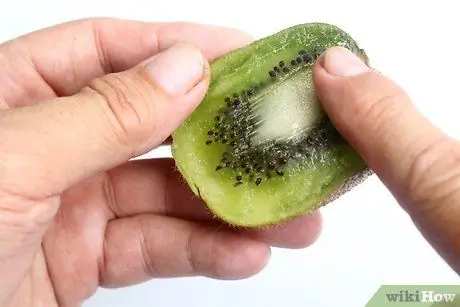
Step 3. Touch the pulp to determine if it is dry or juicy
Press it gently with your finger, if it is dry and hard to the touch, it is very likely that the kiwi has gone bad.
If the pulp is soft and juicy, it is reasonable to think that the fruit is good, unless it smells bad or has moldy parts
Method 3 of 3: Ripe the Kiwis
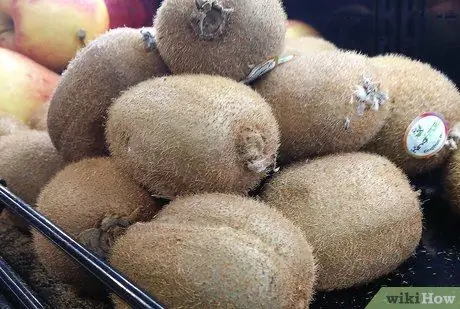
Step 1. Make sure the kiwis are in season
Many of those for sale in the supermarket come from abroad, for example from New Zealand or Chile, where the harvest season is from May to November. It is best to buy kiwifruit when they are in season as they are more likely to be juicy and ripe, plus they will certainly taste better.
The kiwifruit on sale from December to April may have been harvested while still very unripe and are likely to struggle to ripen despite being properly stored
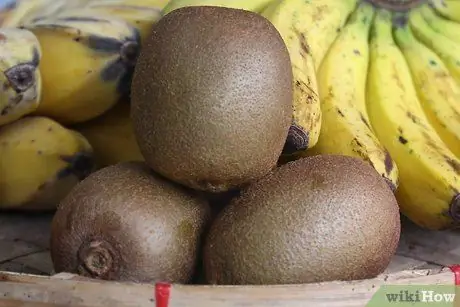
Step 2. Keep the kiwifruit in the fruit bowl next to the apples or bananas
Both are rich in ethylene, so they accelerate the ripening process of neighboring fruits. You can shorten the wait even further by storing kiwifruit with apples or bananas in a paper bag. If you are not in a hurry to eat them, you can keep them in the fruit bowl on the kitchen table.
In addition to apples and bananas, tomatoes, apricots, figs, melons, pears and peaches also help accelerate the ripening process of kiwis
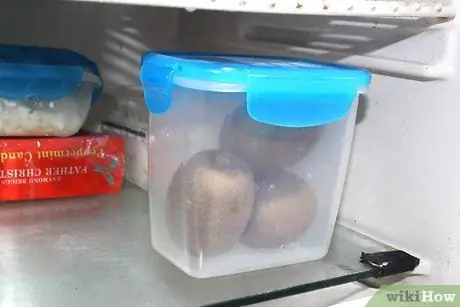
Step 3. Store the ripest kiwifruit in the refrigerator
Fruits that are soft to the touch and very fragrant should be stored in the cold to prevent them from spoiling. If you have half a ripe kiwi left, wrap it in cling film or foil and put it in the refrigerator. If you cut the fruit into pieces, use an airtight container to store them.






